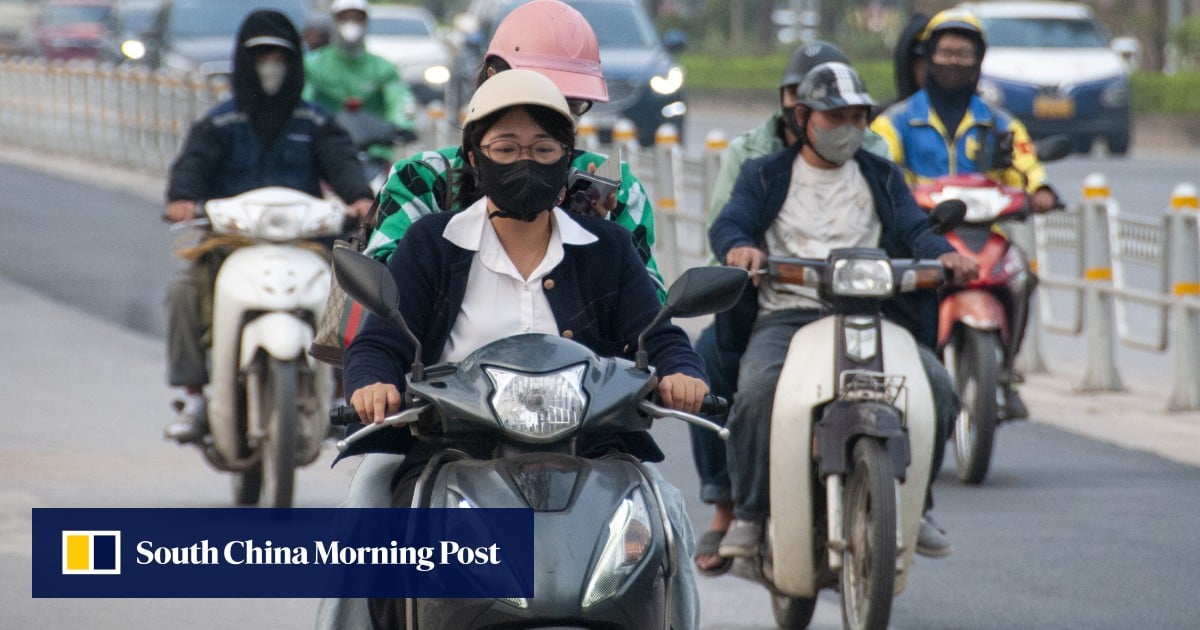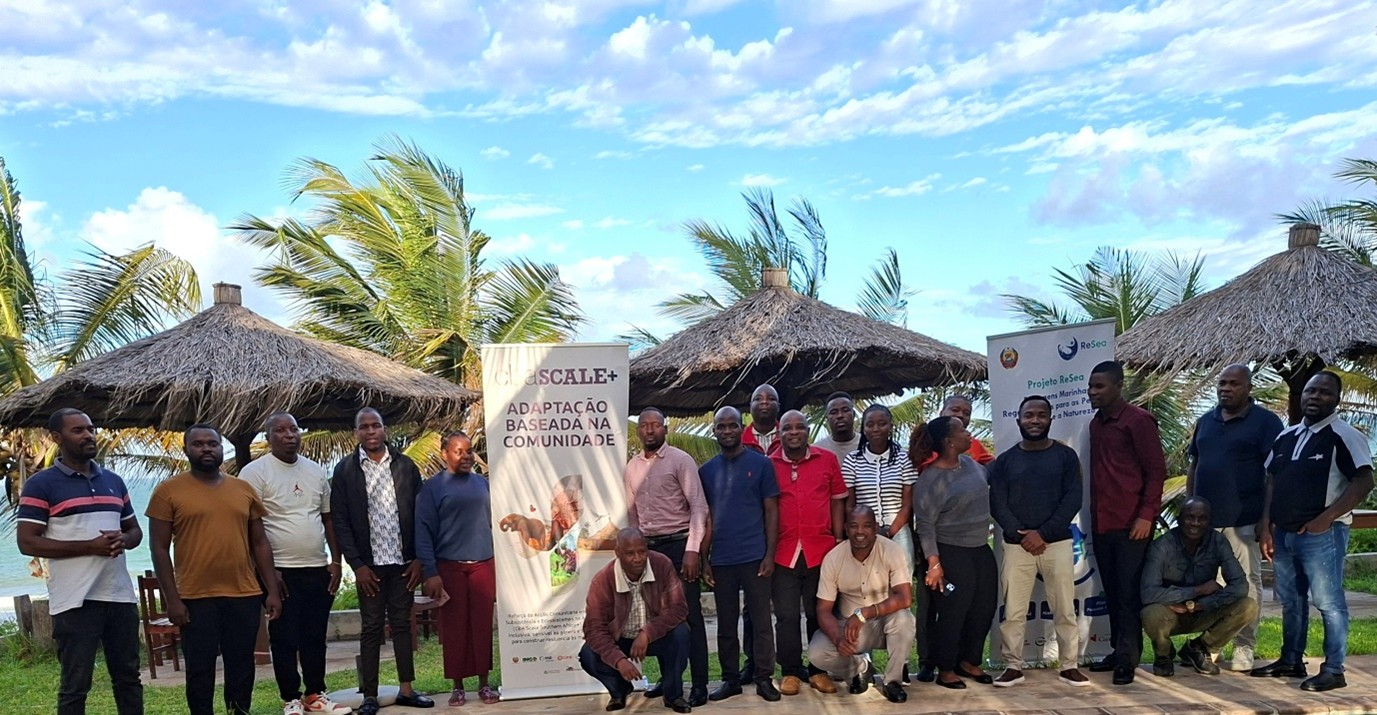How MV Transportation is leading the way in safe, reliable and accessible transportation – Transportation and Logistics International

MV Transportation: A Report on Sustainable Mobility and Community Impact
MV Transportation (MV) operates as the largest US-owned transportation company, providing critical transit services through partnerships with over 100 transit agencies, municipalities, educational institutions, and corporations. With a 50-year history, the company’s operations are fundamentally aligned with several United Nations Sustainable Development Goals (SDGs), focusing on creating inclusive, safe, and sustainable transportation systems.
Foundational Mission and Commitment to Reduced Inequalities (SDG 10)
MV’s inception in 1975 was a direct response to a lack of accessible transportation for vulnerable populations, particularly people with disabilities and the elderly. This founding principle directly supports SDG 10: Reduced Inequalities by providing mobility solutions that ensure all members of the community can participate fully in society.
- The company pioneered paratransit services in San Francisco, a model now mandated by the Americans with Disabilities Act (ADA).
- This focus ensures that marginalized groups have access to essential services, employment, and social engagement, thereby reducing mobility-based inequality.
Core Services and Contribution to Sustainable Cities and Communities (SDG 11)
MV’s diverse service portfolio is integral to building resilient and sustainable urban environments, a key objective of SDG 11: Sustainable Cities and Communities.
- Outsourced Contract Operations: MV manages paratransit and fixed-route systems, providing reliable public transport alternatives to private vehicles.
- Diversified Mobility Solutions: Services have expanded to include airport and campus shuttles, school bus systems, and on-demand micro-transit, creating a comprehensive mobility ecosystem.
- Environmental Sustainability: The company actively supports the deployment and management of zero-emission fleets, directly contributing to cleaner air and more sustainable urban infrastructure.
Strategic Initiatives for Innovation and Decent Work (SDG 8 & 9)
The “New MV” strategy represents a significant investment in human capital and technological advancement, aligning with goals for economic growth, innovation, and infrastructure.
Human Capital Development and Decent Work (SDG 8)
With over 10,000 employees, MV prioritizes professional development and a supportive work environment, contributing to SDG 8: Decent Work and Economic Growth.
- The company offers extensive training options, including a General Manager Development Academy, to build a highly skilled workforce.
- This commitment to employee development fosters stable employment and career growth within the transportation sector.
Technological Innovation and Infrastructure (SDG 9)
MV leverages modern technology to enhance operational efficiency and service quality, supporting SDG 9: Industry, Innovation, and Infrastructure.
- Artificial Intelligence (AI): AI is used to optimize the employee experience, enhance driver monitoring, and improve passenger engagement through automated call centers and notifications.
- Data-Driven Systems: Technology integrations enable intelligent routing and fleet performance management, building a scalable and resilient transportation infrastructure for the future.
Operational Pillars: Safety and Partnerships (SDG 3 & 17)
The company’s operational framework is built on a culture of safety and collaboration, which are essential for achieving broader development goals.
Commitment to Safety, Health, and Well-being (SDG 3)
A core value of the organization is safety, which directly supports SDG 3: Good Health and Well-being by protecting passengers and employees.
- Substantial investments have been made in advanced safety systems, comprehensive operator training, and real-time data analytics.
- This safety-first culture ensures that public transportation is a secure and reliable option, promoting community well-being.
Partnerships for the Goals (SDG 17)
MV’s business model is inherently collaborative, reflecting the principles of SDG 17: Partnerships for the Goals.
- The company engages in long-term, collaborative relationships with transit agencies, municipalities, and other clients.
- This partnership-based approach allows for the co-creation of tailored mobility solutions that meet specific community needs and strengthen public infrastructure.
Conclusion: Future Outlook
As MV Transportation marks its 50th anniversary, its future strategy remains centered on its people-first mission. The company aims to be the partner of choice in North America by setting industry standards in safety, innovation, and passenger experience. Through strategic growth and a continued focus on its core values, MV is positioned to deepen its impact on creating accessible, sustainable, and equitable communities in alignment with global development objectives.
Analysis of MV Transportation Article and Sustainable Development Goals
1. Which SDGs are addressed or connected to the issues highlighted in the article?
-
SDG 8: Decent Work and Economic Growth
- The article highlights MV Transportation as a major employer with “over 10,000 employees.” It emphasizes its commitment to being a “people-first organization” through significant investment in “employee development, operational and safety systems management, and customer service training,” including a “General Manager Development Academy.” This focus on job creation, employee training, and a “safety-first culture” directly connects to promoting sustained, inclusive economic growth and decent work.
-
SDG 9: Industry, Innovation, and Infrastructure
- MV Transportation’s strategy involves building resilient infrastructure and fostering innovation. The article states the company is “building data-driven technology integrations” and has implemented “new technologies like AI, data systems, and mobility technology, to future-proof operations.” This commitment to using technology for “performance optimization,” “intelligent routing,” and building “the infrastructure now to meet the transportation demands of tomorrow” aligns with this goal.
-
SDG 10: Reduced Inequalities
- The company’s founding mission was to serve “their community’s most vulnerable citizens,” specifically “people with disabilities and the elderly,” for whom transport services were limited. The article explicitly mentions that the company began by providing what are now known as “paratransit services,” which are mandated by the Americans with Disabilities Act (ADA). This core focus on providing accessibility and mobility for vulnerable populations is a direct effort to reduce inequalities.
-
SDG 11: Sustainable Cities and Communities
- The core business of MV Transportation is to provide “seamless transit options” and make communities more accessible and sustainable. The article details their work in providing “outsourced contract operations and maintenance for both paratransit and fixed-route systems,” as well as “airport and campus shuttles, school bus systems, and on-demand micro transit services.” This work directly contributes to creating safe, affordable, accessible, and sustainable transport systems for all.
-
SDG 13: Climate Action
- The article mentions that MV Transportation is “supporting the deployment and management of zero-emission fleets.” This initiative is a direct measure to combat climate change by reducing the carbon footprint of its transportation services, aligning with global efforts to mitigate climate impacts.
2. What specific targets under those SDGs can be identified based on the article’s content?
-
Under SDG 8 (Decent Work and Economic Growth):
- Target 8.5: By 2030, achieve full and productive employment and decent work for all women and men, including for young people and persons with disabilities, and equal pay for work of equal value. The article’s emphasis on its large workforce of “over 10,000 employees” and its “people-first” approach relates to this target.
- Target 8.8: Protect labour rights and promote safe and secure working environments for all workers. The company’s statement that “Safety isn’t just a priority, it’s a core value woven into every aspect of our company” and its investments in “advanced safety systems, comprehensive operator training… and robust field supervision” directly address this target.
-
Under SDG 9 (Industry, Innovation, and Infrastructure):
- Target 9.1: Develop quality, reliable, sustainable and resilient infrastructure… to support economic development and human well-being, with a focus on affordable and equitable access for all. MV’s work in building “data-driven technology integrations that allow for more intelligent routing” and using technology to “meet the transportation demands of tomorrow” aligns with developing reliable and sustainable infrastructure.
-
Under SDG 10 (Reduced Inequalities):
- Target 10.2: By 2030, empower and promote the social, economic and political inclusion of all, irrespective of age, sex, disability, race, ethnicity, origin, religion or economic or other status. The company was founded specifically to provide transportation for “people with disabilities and the elderly,” thereby promoting their inclusion and ability to participate in community life.
-
Under SDG 11 (Sustainable Cities and Communities):
- Target 11.2: By 2030, provide access to safe, affordable, accessible and sustainable transport systems for all, improving road safety, notably by expanding public transport, with special attention to the needs of those in vulnerable situations, women, children, persons with disabilities and older persons. This target is the essence of MV’s mission, as it provides a wide range of public transport services, including specialized “paratransit services” for vulnerable populations.
-
Under SDG 13 (Climate Action):
- Target 13.2: Integrate climate change measures into national policies, strategies and planning. While MV is a company, not a country, its corporate strategy of “supporting the deployment and management of zero-emission fleets” represents the integration of climate action into its business planning and operations, contributing to the broader goal.
3. Are there any indicators mentioned or implied in the article that can be used to measure progress towards the identified targets?
-
For SDG 8 Targets:
- Indicator: Number of employees. The article states MV has “over 10,000 employees.”
- Indicator: Investment in employee training. The existence of programs like the “General Manager Development Academy” is a qualitative indicator of progress.
- Indicator: Safety performance. The claim that their “operations consistently rank among the safest in the industry” implies the use of safety metrics (e.g., accident rates) to measure progress.
-
For SDG 9 Targets:
- Indicator: Adoption of new technologies. The implementation of “AI, data systems, and mobility technology” serves as an indicator of innovation.
- Indicator: Efficiency improvements. The use of technology for “performance optimization” and “intelligent routing” implies metrics are used to track efficiency gains.
-
For SDG 10 Targets:
- Indicator: Provision of services for vulnerable groups. The operation of “paratransit services” is a direct indicator of providing accessible transportation for people with disabilities and the elderly.
-
For SDG 11 Targets:
- Indicator: Scale of public transit partnerships. The partnership with “over 100 transit agencies, municipalities, schools, and corporations” indicates the breadth of public transport expansion.
- Indicator: Diversity of transport services. The offering of “paratransit and fixed-route systems… airport and campus shuttles, school bus systems, and on-demand micro transit services” indicates the expansion and diversification of public transport options.
-
For SDG 13 Targets:
- Indicator: Number or proportion of zero-emission vehicles in the fleet. The action of “supporting the deployment and management of zero-emission fleets” is a direct, measurable activity contributing to this goal.
4. Summary Table of SDGs, Targets, and Indicators
| SDGs | Targets | Indicators |
|---|---|---|
| SDG 8: Decent Work and Economic Growth |
8.5: Achieve full and productive employment and decent work for all.
8.8: Protect labour rights and promote safe and secure working environments. |
– Number of people employed (over 10,000). – Existence of employee development programs (“General Manager Development Academy”). – Implementation of “advanced safety systems” and a “safety-first culture.” |
| SDG 9: Industry, Innovation, and Infrastructure | 9.1: Develop quality, reliable, sustainable and resilient infrastructure. |
– Implementation of “AI, data systems, and mobility technology.” – Development of systems for “intelligent routing” and “fleet performance.” |
| SDG 10: Reduced Inequalities | 10.2: Empower and promote the social, economic and political inclusion of all, irrespective of age, sex, disability, etc. | – Provision of specialized “paratransit services” for people with disabilities and the elderly. |
| SDG 11: Sustainable Cities and Communities | 11.2: Provide access to safe, affordable, accessible and sustainable transport systems for all, with special attention to the needs of those in vulnerable situations. |
– Number of partnerships with public and private entities (“over 100”). – Range of transport services offered (paratransit, fixed-route, micro transit, etc.). |
| SDG 13: Climate Action | 13.2: Integrate climate change measures into policies, strategies and planning. | – Corporate action of “supporting the deployment and management of zero-emission fleets.” |
Source: tlimagazine.com

What is Your Reaction?
 Like
0
Like
0
 Dislike
0
Dislike
0
 Love
0
Love
0
 Funny
0
Funny
0
 Angry
0
Angry
0
 Sad
0
Sad
0
 Wow
0
Wow
0




















































.jpg.webp?itok=0ZsAnae9#)




























